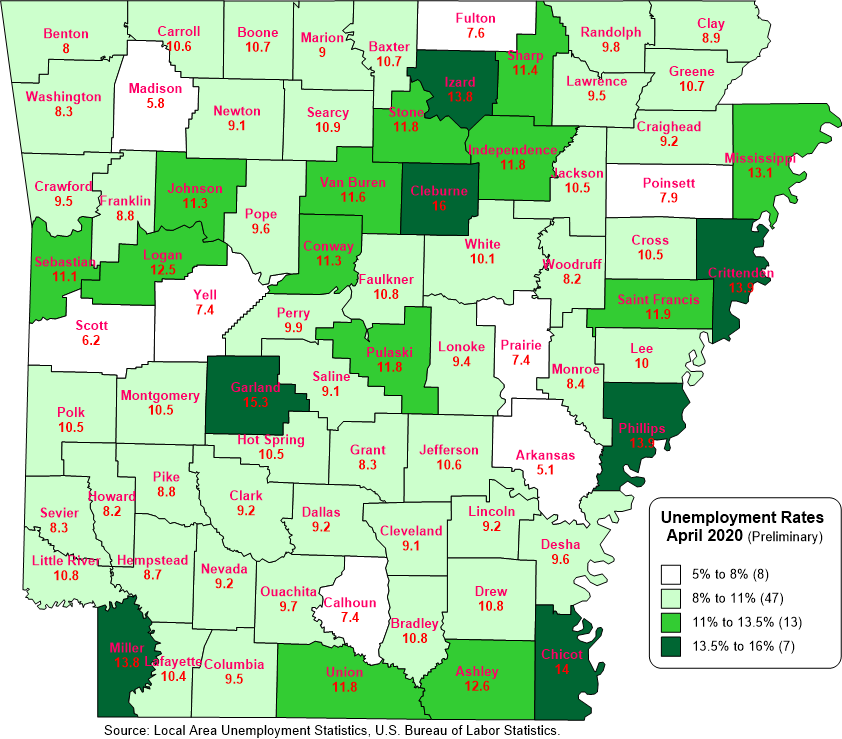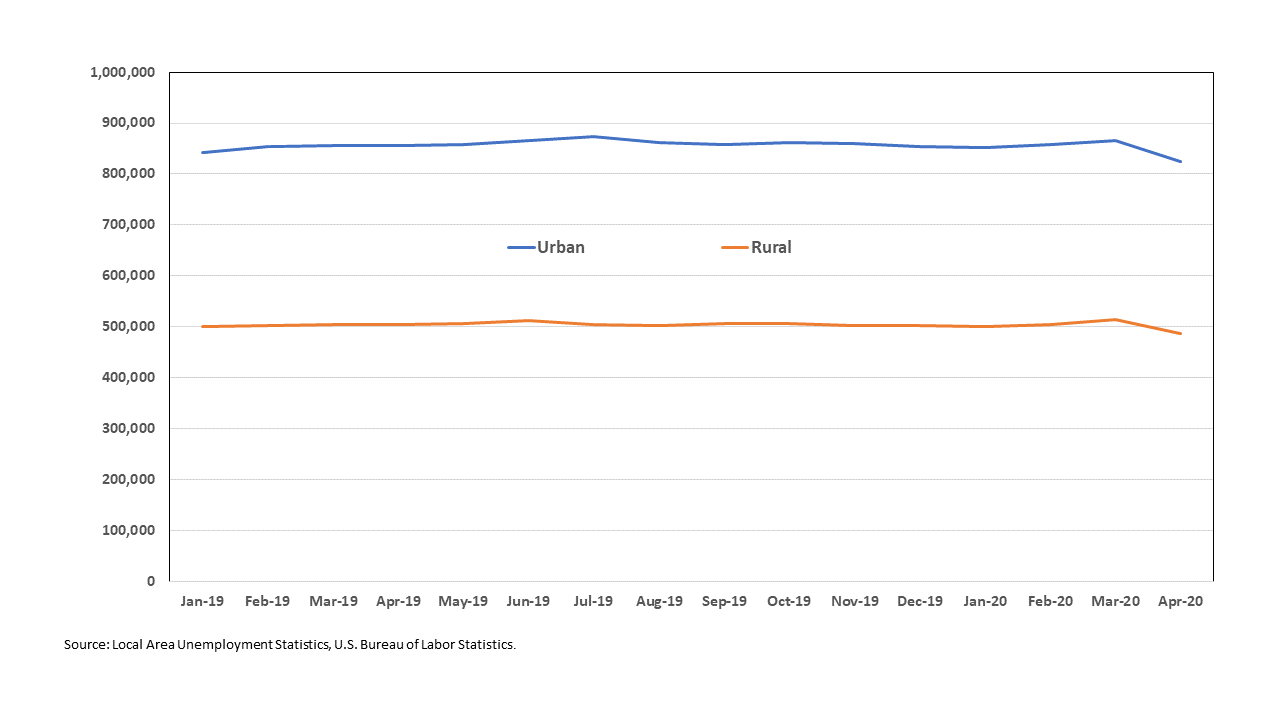June
Contact
Wayne Miller
Professor-CPED
Phone: 501-671-2085
Email: wmiller@uada.edu
University of Arkansas System Division of Agriculture
Cooperative Extension Service
2301 S. University Avenue
Little Rock, AR 72204
The COVID-19 Pandemic Affects Unemployment in Arkansas Counties Differently
While the April 2020 unemployment rate for Arkansas was 10.2%, which was less than the national average of 14.7%, the unemployment rate varied greatly among counties in the state and underestimated the number of people without work.
Also, the number of unemployed grew faster in the urban counties resulting in a somewhat higher average unemployment rate in urban (10.8%) compared to rural (10.0%) counties of the state.¹ Historically unemployment rates have been higher in rural counties.
There were vast differences in unemployment rates among both rural and urban counties in the state. In rural counties, the unemployment rate varied from a little more than 5% in Arkansas County to 16% in Cleburne County (Figure 1). One possible reason for the high unemployment rate in Cleburne County is that the county economy relies heavily on the travel and tourism industry, which has been affected by the travel restrictions related to COVID-19.
Other rural counties with high unemployment rates approaching 14% are Chicot, Phillips and Izard counties. Although their unemployment rates increased between March and April of this year, these three counties had much higher unemployment rates than the statewide average even before the start of the COVID-19 pandemic
Figure 1. Unemployment Rates April 2020

The unemployment rate in urban counties ranged from a low of 8% in Benton County to a little more than 15% in Garland County. One explanation for the high unemployment rate in many urban counties, especially Garland County, is that the county is heavily dependent on the travel and tourism industry, which was greatly impacted by the travel restrictions due to COVID-19. Crittenden and Miller are two other urban counties, that also had high unemployment rates approaching 14%.
April 2020 has been the first time the average unemployment rate in urban counties has been higher than the average for rural counties for at least 10 years.
However, unemployment rates do not provide a true picture of the increase in workers without employment during the COVID-19 pandemic. Unemployment rates are calculated as the percent of people in the labor force that are unemployed. However, between March and April of 2020, many workers dropped out of the labor force and were not included in the unemployment count (Figure 2).
Many workers may have dropped out of the labor force as a result of the COVID-19 pandemic and others may not have been included in the labor force count if they lost their job, but their unemployment insurance claim had not yet been processed. In Arkansas the labor force declined by a little over 67,000 workers, or about 5% of the labor force, between March and April of this year.
Figure 2. Labor Force in Rural and Urban Counties of Arkansas

Rural and urban counties both saw declines in their labor force, declining 5.1% in rural counties and slightly less in urban counties (4.7%). Since there is a larger labor force in urban counties, it is not surprising that nearly 41,000 of the 67,000 workers no longer counted in the workforce are in urban counties.
While these are only preliminary numbers, they provide us with an estimate of the effect of the COVID-19 pandemic on the number of workers without employment as of the middle of April 2020. For a more detailed analysis of the workers unemployed resulting from the COVID-19 pandemic see the publication “The COVID-19 Pandemic Affects Unemployment in Counties Differently” at https://www.uaex.uada.edu/life-skills-wellness/health/covid19/COVID-Economic_Impacts_in_Arkansas.aspx.
¹ For a classification of rural and urban counties in Arkansas, see our publication, Rural Profile of Arkansas 2019 at www.uaex.uada.edu/ruralprofile/.